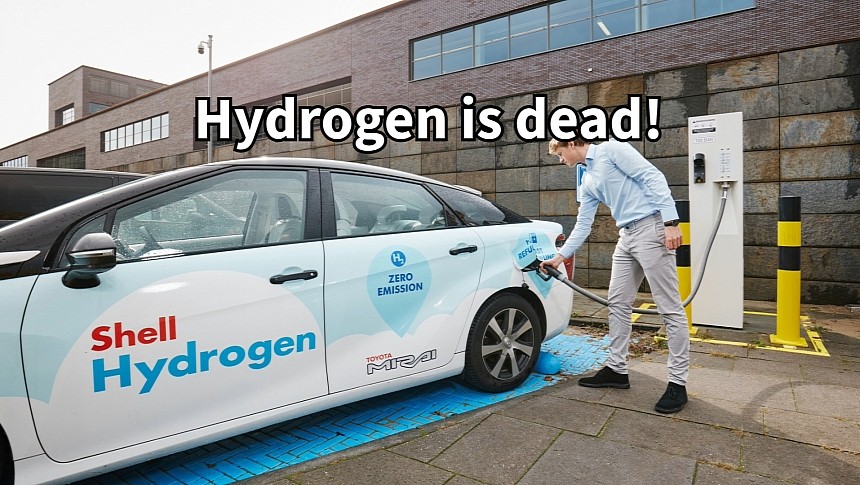What is China’s hydrogen fuel and transport strategy?
China's hydrogen industry development on the "fast track" (expert interpretation)
Interviewed expert: Jia Weilei, vice president of Beijing Ecological Civilization Engineering Research Institute and researcher of Budapest Center for Long-term Sustainable Development
People's Daily Overseas Edition (10th edition, April 24, 2023)
Recently, the 2023 China International Clean Energy Expo and China International Hydrogen Energy and Fuel Cell Industry Exhibition was held. The picture shows the audience visiting the solution of green hydrogen production system.
Photo by Chen Xiaogen (People's Vision)
According to the Nihon Keizai Shimbun, China has positioned hydrogen energy as an important part of the national energy system. To this end, China issued the "Medium and Long-Term Plan for the development of Hydrogen energy Industry (2021-2035)", proposing that by 2025, the number of fuel cell vehicles using hydrogen energy will reach about 50,000, and the amount of hydrogen production from renewable energy will reach 100,000 to 200,000 tons/year, and will popularize hydrogen fuel cell vehicles in areas such as buses and logistics. China also proposed to promote international cooperation in the field of hydrogen energy and help the infrastructure construction of countries along the Belt and Road.
The Spanish "Abez newspaper" website reported that green hydrogen energy is getting more and more attention from the world's major economies, and China has joined this wave to seek to change the energy model and focus on the development of hydrogen energy.
Hydrogen energy is a secondary energy with great development prospects in the 21st century, because of its light weight, strong thermal conductivity, high heating value, clean and low-carbon, recyclable and other multiple characteristics, and it has great application potential in transportation, industry, construction and other fields.
China has made progress on many fronts in the field of hydrogen energy: First, hydrogen production capacity has steadily increased. At present, China's hydrogen production is about 33 million tons, of which about 12 million tons meet industrial hydrogen quality standards, and it is the world's largest hydrogen production country, which has great potential in hydrogen energy supply. Second, hydrogen technology continues to develop. China has initially mastered the main technologies and production processes of hydrogen energy preparation, storage and transportation, hydrogenation, fuel cells and system integration, and made breakthroughs in long-distance hydrogen transportation technology. Third, the application field of hydrogen energy is gradually expanding. China has achieved small-scale demonstration applications of fuel cell vehicles in some regions, becoming one of the countries that are internationally recognized as most likely to take the lead in realizing the industrialization of hydrogen fuel cells and hydrogen vehicles. The number of hydrogen fuel cell vehicles reached 14,979, ranking third in the world. Fourth, the construction of hydrogen refueling stations is being rolled out. By the end of 2022, China has built 310 hydrogen refueling stations, ranking first in the world. Fifth, the hydrogen energy industry shows a trend of cluster development. The Beijing-Tianjin-Hebei region, the Yangtze River Delta and the Guangdong-Hong Kong-Macao Greater Bay Area have brought together more than 300 industrial enterprises above designated size across the entire industrial chain.
In recent years, China has focused on the layout of hydrogen energy industry, laying a good foundation for the further development of hydrogen energy technology and industrial chain. The "Opinions of the Central Committee of the Communist Party of China and The State Council on Fully, Accurately and Comprehensively Implementing the New Development Concept and Doing a good job of carbon Peaking carbon neutrality" requires that the whole chain development of hydrogen energy "production, storage and transportation" be promoted as a whole. The "Action Plan for Carbon Peak before 2030" proposes to accelerate the research and development and demonstration application of hydrogen energy technology, and explore large-scale application in industry, transportation, construction and other fields. The "14th Five-Year Plan for Renewable Energy Development" proposes to carry out large-scale demonstration of renewable energy hydrogen production and promote green hydrogen replacement in key areas such as chemical industry, coal mining, and transportation. The Medium and Long-Term Plan for the Development of Hydrogen Energy Industry (2021-2035) clearly states that hydrogen energy is a key direction for the development of strategic emerging industries, and a new growth point for the construction of a green and low-carbon industrial system and industrial transformation and upgrading. In addition to a series of top-level designs, local governments have issued more than 70 related supporting policies to jointly build a comprehensive hydrogen energy development system covering scientific and technological innovation, application demonstration, infrastructure, industrial layout and other links.
There is broad space for global cooperation on green hydrogen energy, and China has always actively integrated into the global hydrogen energy industrial chain and supply chain, and strengthened open cooperation with other countries in technological innovation, green hydrogen energy trade, and standard rules. In recent years, the China Hydrogen Energy Alliance has actively carried out joint industrial research between China and Europe, promoted the construction of the "Belt and Road" green hydrogen trade corridor between China and Europe, and jointly promoted the green development of the China-Eu hydrogen energy industry. Not long ago, the National Energy Group also signed an expansion cooperation agreement with the French Electric Power Group, planning to jointly build a "scenery hydrogen storage" green energy synergic integration of the offshore integrated smart energy island demonstration project in Dongtai, Jiangsu province, with a total planned installed capacity of 1.5 million kilowatts, and will actively reach a specific cooperation and investment opportunity for third-party market renewable energy projects. In December 2022, the China Hydrogen Energy Alliance Research Institute, together with the Suzhou Municipal People's Government and a number of enterprises, initiated the establishment of the China-Eu Hydrogen energy Technology Innovation Center, focusing on the research, personnel training, equipment technology demonstration and incubation of the China-Eu hydrogen energy industry.
China Hydrogen Energy Alliance predicts that in 2026-2035, the output value of China's hydrogen energy industry will reach 5 trillion yuan. In the future, to guide the healthy and orderly development of the hydrogen energy industry, we should continue to make efforts in the following aspects: First, systematically build a system to support the high-quality development and innovation of the hydrogen energy industry, improve the level of key core technologies, strive to build industrial innovation support platforms, promote the construction of hydrogen energy professionals, and actively carry out international cooperation in hydrogen energy technology innovation; The second is to promote the construction of hydrogen energy infrastructure as a whole, rationally layout hydrogen production facilities, steadily build storage and transportation systems, and plan hydrogenation networks as a whole; Third, steadily promote diversified demonstration applications of hydrogen energy, orderly promote demonstration applications in the field of transportation, actively carry out demonstration applications in the field of energy storage, rationally layout multiple applications in the field of power generation, and gradually explore alternative applications in the industrial field; Fourth, accelerate the improvement of the hydrogen energy development policy and institutional guarantee system, establish and improve the hydrogen energy policy system, establish and improve the hydrogen energy industry standard system, and strengthen the safety supervision of the whole chain.

 www.timeshighereducation.com
www.timeshighereducation.com













 Where Are the Hydrogen Cars We Were Promised?
Where Are the Hydrogen Cars We Were Promised?